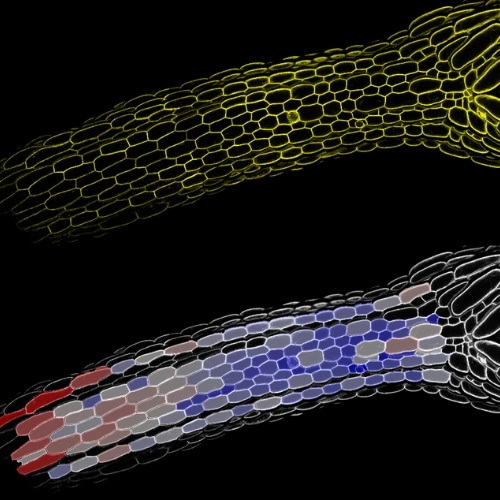
Image Segmentation to Study Plant Biology

François Jobert
Research Engineer, Université de Picardie Jules Verne
Read BioFrançois Jobert obtained a PhD in Plant Physiology from Université de Picardie Jules Verne (Amiens, France) in 2018, focusing on hormone signaling and adventitious root formation. He pursued postdoctoral research at INRA Montpellier on auxin and root development, then at Umea Plant Science Centre (Sweden) on plant cell shape acquisition. Now in Amiens, he is developing a new imaging platform.
CloseConfocal microscopy is a powerful tool for studying plant biology, providing high-resolution images of cellular structures and dynamic processes. However, extracting quantitative information from these images requires robust image segmentation techniques.
Traditional threshold-based methods often struggle with complex plant tissues due to variations in fluorescence intensity, overlapping structures, and background noise. Recent advances in deep learning-based segmentation have significantly improved both accuracy and automation.
Using the Cellpose algorithm enables precise identification of cellular components, facilitating the analysis of cell morphology. Automated segmentation pipelines reduce user bias and increase reproducibility, enabling image analysis for high-throughput phenotyping.
In this webinar, you will learn:
- How deep learning-powered segmentation overcomes the challenges of analyzing complex plant tissues
- How automated pipelines improve reproducibility and enable high-throughput phenotyping
- Real-world case studies on Arabidopsis and Marchantia to understand plant growth and cell division
Learn how deep learning-powered segmentation with Cellpose enables accurate, automated analysis of complex plant tissues, improving morphological analyses and quantification of growth and division.
We applied this method to study how plant cells grow and divide. For example, we tracked how Arabidopsis seedlings elongate in response to temperature changes. In another case, using the model plant Marchantia polymorpha, we discovered how cell walls influence cell division.
In this presentation, we will share our approaches to image analysis and discuss how they can advance plant research.
